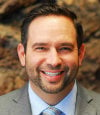
As educators, we're always looking for what sets great schools apart from the others. While there are many factors that can lead to high performance and help build a positive culture, there's hardly a secret formula for success in every single school.
But there is one thing that all great schools have in common—great leaders.
According to research from the Wallace Foundation, there is a clear link between strong leadership and student achievement. There's also great evidence showing a principals' impact on the professional growth and retention of teachers.
In fact, a study of 40,000 teachers from The Bill and Melinda Gates Foundation and Scholastic showed that more teachers would rather have a supportive and effective leader than a higher salary.
Unfortunately, not every district's priorities have caught up with research. According to Alison DeNisco's District Administration article, Evolving principal role requires new professional development, only four percent of federal funding for educator development is spent on resources and offerings for principals.
Just as teachers need high quality support to grow, principals must have access to relevant professional learning that systematically improves practices. Still, truly effective PD for school leaders is hard to come by—largely because it's hard to do.
For over four years, Insight has partnered with the Syracuse City School District to support principals and grow their capacity as instructional leaders within their buildings. Featured in a recent District Administration article, Prioritizing principal PD, our work has targeted the unique needs of new leaders in particular by focusing on what principals really need out of PD.
Here are three keys to finding and implementing impactful PD programs for school leaders:
#1. Stay in touch.
Though principals are expected to be the instructional leaders within their buildings, most have been out of the classroom for years. Look for PD that addresses new instructional shifts, research-based best practices, and current technology so that school leaders can stay relevant and able to recognize college and career readiness in classrooms.
#2. Focus on feedback.
It's clear that high quality observation and feedback cycles can be among the most powerful ways to promote teachers' practices. But too often, principals are not appropriately trained on how to use observation frameworks or provide meaningful, actionable feedback. Seek out training that provides direct support to school leaders in identifying great instruction and recognizing opportunities for growth—and most importantly, building a culture of feedback and shared investment in instructional goals.
#3. Look at the big picture.
Effective leaders are ultimately visionaries and successful change agents within their buildings. Principals must be prepared to define priorities and communicate the trajectory of growth to staff, students, and community stakeholders. PD should help school leaders develop clear plans and strategies for articulating them.
Great schools need great principals. It's clear that school leaders need to invest in their own professional growth and prioritize opportunities that are intentional in building skills that translate to real school improvement.
In "How Our Leadership Academies are Creating Better School Principals," hear from CAO Linda Mulvey on how Insight and Syracuse have partnered together to create leadership academies for principals that provide the support they need—and want.





Leave a Comment